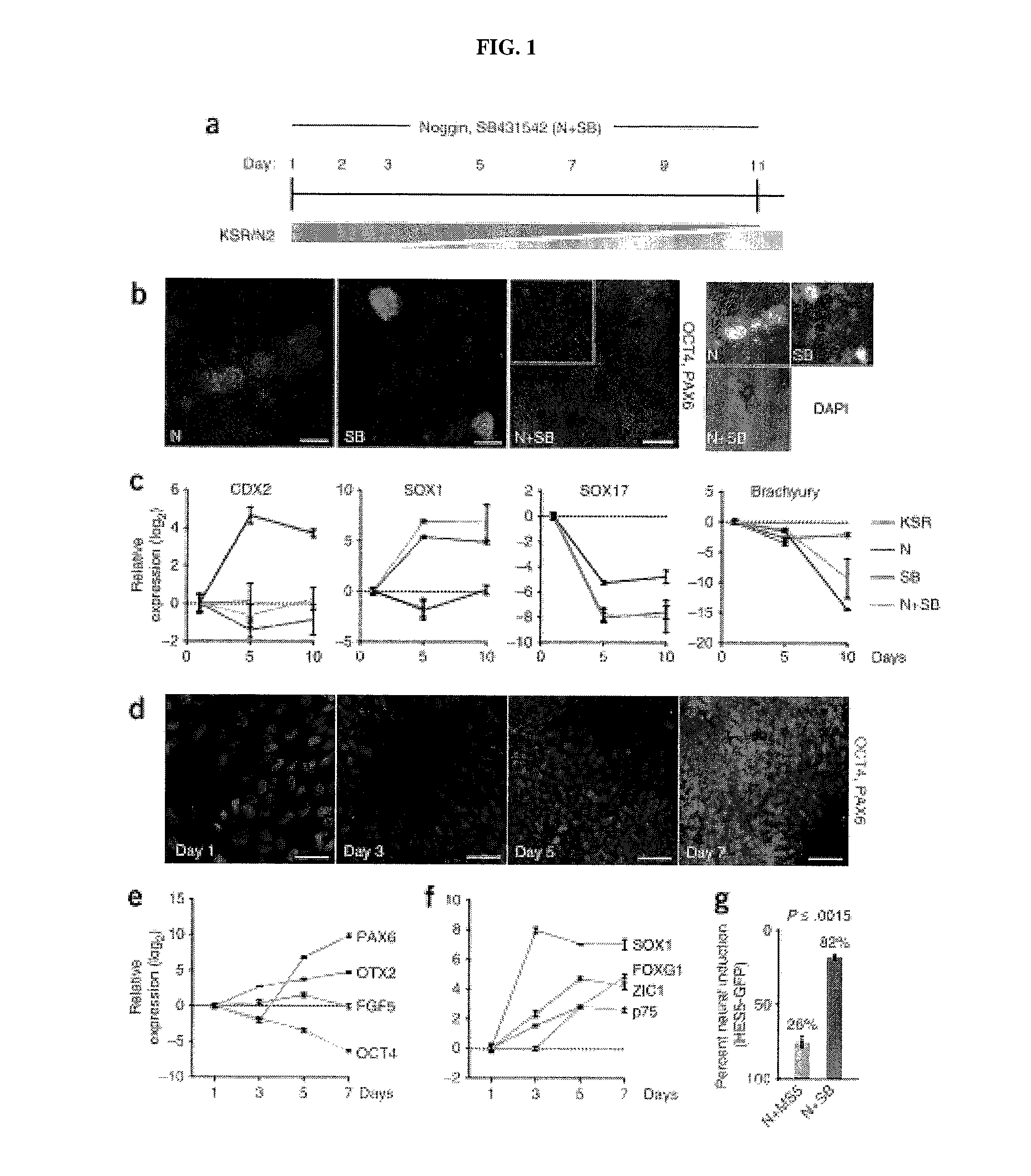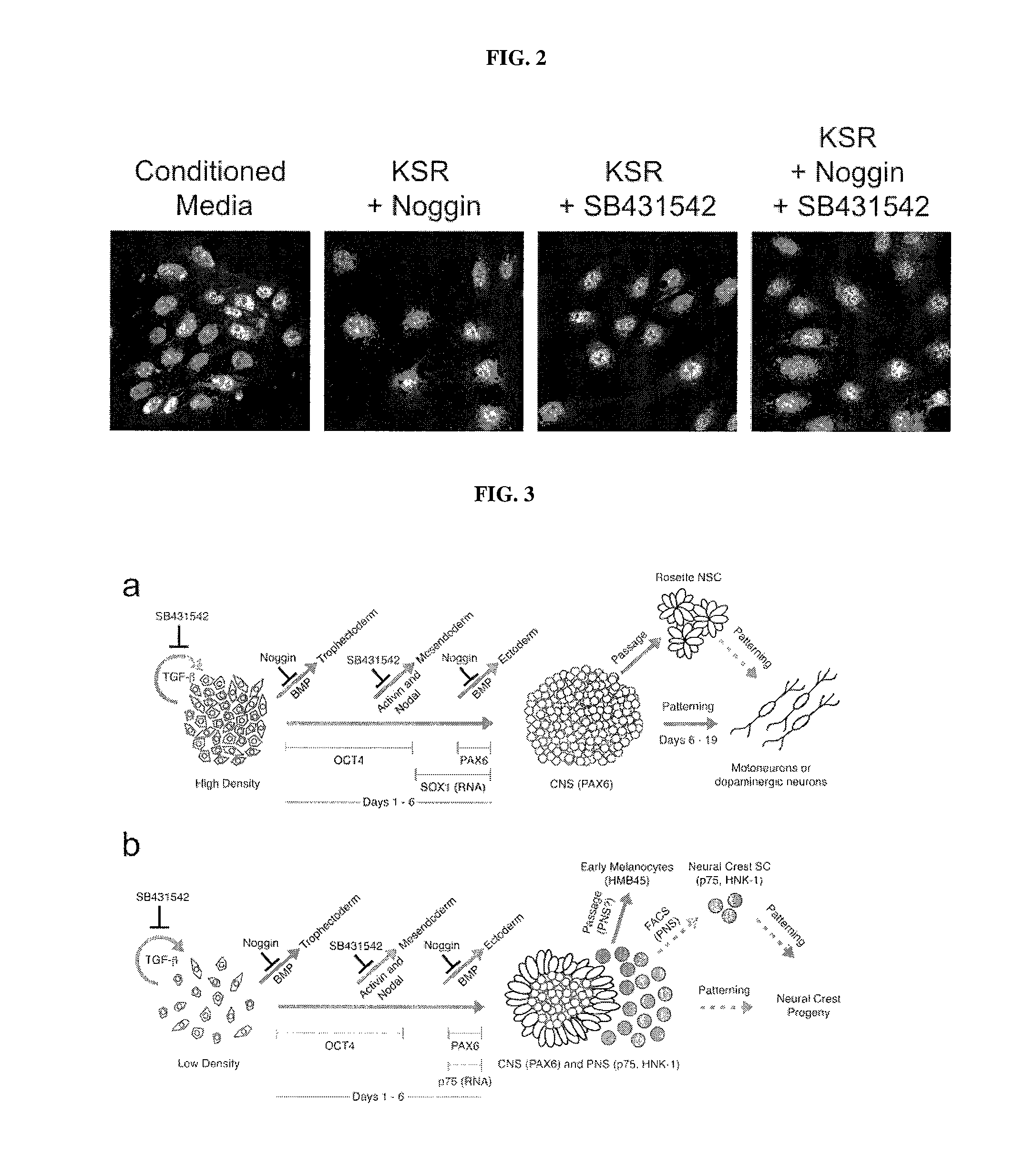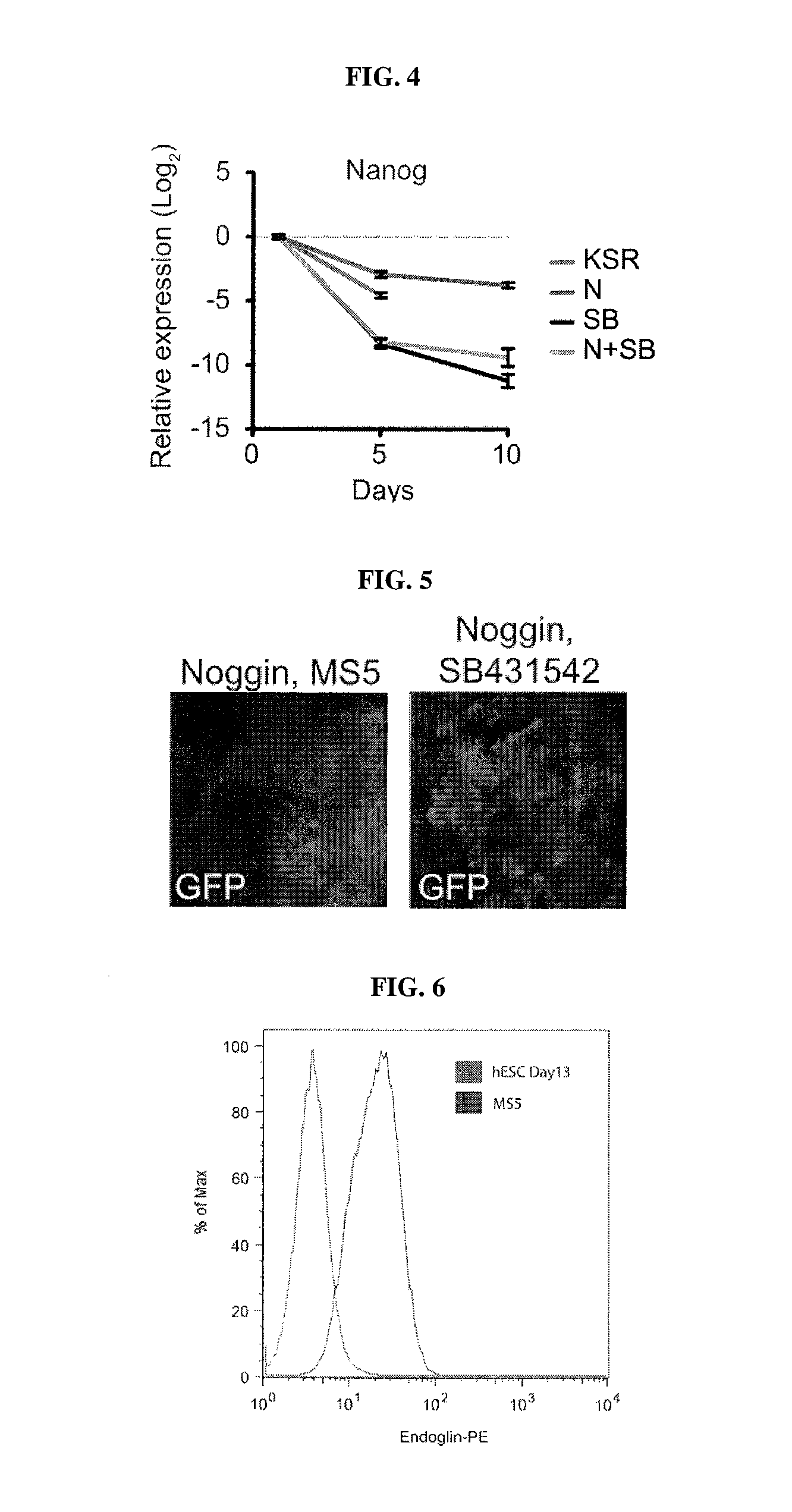Methods of neural conversion of human embryonic stem cells
a technology of human embryonic stem cells and neural conversion, which is applied in the field of cell biology of stem cells, can solve the problems of affecting the function of dkk-1 protein, little is known about fp development in humans, and the development of human neural development is less understood
- Summary
- Abstract
- Description
- Claims
- Application Information
AI Technical Summary
Problems solved by technology
Method used
Image
Examples
example i
Bone Morphogenetic Protein (BMP) Levels Determine Placode Fate Identity.
[0222]Sensory placodes are developmental structures formed at the interface of early neuroectodermal and non-neural ectoderm tissue. To address whether the N-SB culture system is suitable for the derivation of placodal cells, The inventors first established a set of markers to identify placode identity in human embryonic stem cells (hESCs)-derived cultures. From studies in other model organisms, The inventorspostulated a number of candidate markers to identify human placodal precursor during hESC differentiation including member of the Six, Eya, and Dlx family of transcription factors. Six1 marks the pre-placodal region and placodal cells in model organisms but is also expressed in skeletal muscle precursors. Immunocytochemical analyses revealed 6%±4% Six1+ cells at day 11 of N-SB differentiation. The absence of the expression of skeletal muscle markers in Six1+ cells suggested placodal precursor cell identity.
[...
example ii
IPS Cell Generation
[0233]The cDNAs encoding hOct4, hSox2, hKlf4 and c-myc (purchased from Open Biosystems) were subcloned into self-inactivating lentiviral vectors driven by the human phosphoglycerate kinase (PGK) promoter. Lentiviral vector supernatants were produced by triple co-transfection of the plasmid DNA encoding the vector, pCMVΔR8.91 and pUCMD.G into 293T cells. Human fetal lung fibroblasts (MRC-5) purchased from ATCC (CCL-171) were seeded at 1.5×104 cells / cm2 in Eagle's Minimum Essential Medium supplemented with 10% fetal bovine serum (FBS). The following day the fibroblasts were transduced with equal amounts of supernatants of the four lentiviral vectors in the presence of 4 ug / ml polybrene for ˜16 hours. Six days after transduction, fibroblasts were harvested by trypsinization and plated at 2×104 cells per 60 mm dish on a feeder layer of mytomycin C-treated mouse embryonic fibroblasts (CF-1). The next day, the medium was switched to hESC medium. The hiPS lines were conf...
example iii
Early High-Dose SHH Exposure Induces FOXA2 and Represses BF1.
[0249]hESC derived neural cells at the rosette stage were differentiated into both CNS and PNS progeny and patterned towards multiple cells fates along the A / P and D / V axis (Elkabetz et al., 2008). These results demonstrated that rosette stage cells were highly plastic and responsive to patterning cues including SHH. Specification of progenitor cells into FP tissue and cells during mouse development was thought to depend on SHH signaling within early neural lineages. The inventors tested whether rosette-stage neural cells were competent to undergo FP specification in response to SHH. High concentrations of SHH were needed to induce FP during mouse development (Roelink et al., 1994; Ericson et al., 1996). Recombinant N-terminal SHH has a limited activity range due to the lack of posttranslational modifications required for full SHH action. Recently, a modified version of recombinant SHH became available where SHH was tether...
PUM
| Property | Measurement | Unit |
|---|---|---|
| concentration | aaaaa | aaaaa |
| density | aaaaa | aaaaa |
| concentrations | aaaaa | aaaaa |
Abstract
Description
Claims
Application Information
 Login to View More
Login to View More - R&D
- Intellectual Property
- Life Sciences
- Materials
- Tech Scout
- Unparalleled Data Quality
- Higher Quality Content
- 60% Fewer Hallucinations
Browse by: Latest US Patents, China's latest patents, Technical Efficacy Thesaurus, Application Domain, Technology Topic, Popular Technical Reports.
© 2025 PatSnap. All rights reserved.Legal|Privacy policy|Modern Slavery Act Transparency Statement|Sitemap|About US| Contact US: help@patsnap.com



